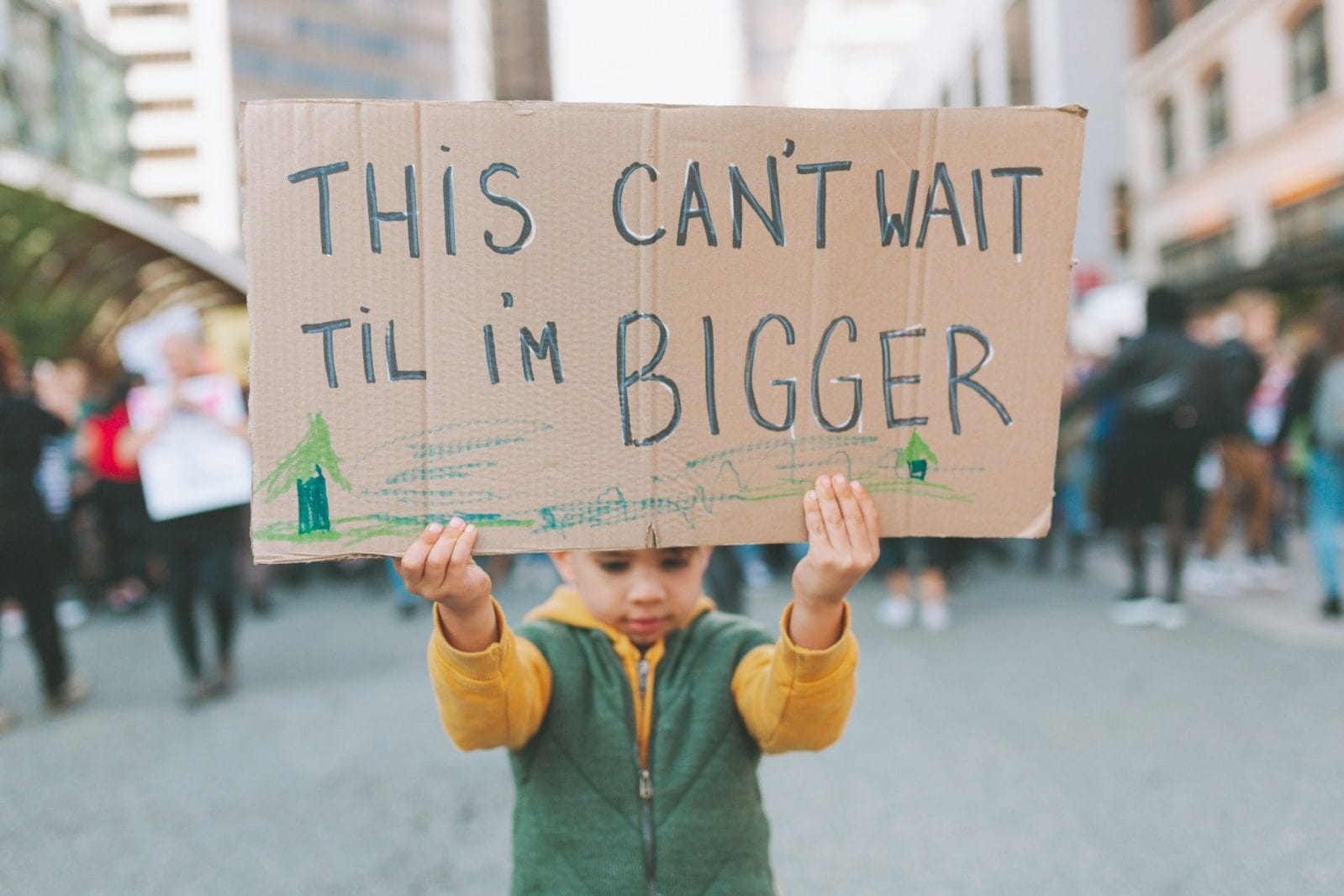How to talk to kids about climate change and sustainability

crystalmariesing / Twenty20
It can be a learning opportunity for you both.
This story was originally published on December 21, 2021. It has been updated.
Table of Contents
You might be hesitant to talk with your children about hard truths. However, ignoring these harsh realities doesn’t make them go away. One of those challenging topics is climate change, but you may be confused on where to start or how to talk to kids about climate change.
If your children are in school or are involved in social media in any way, then it’s highly likely they’ve come across the topic. If it’s not coming from you, they may be getting skewed information. Talking with them about climate change directly can better prepare them to face the facts and take action. That just leaves the question of how to talk to kids about climate change.
Related: I’m a climate scientist. Here’s how climate change impacts mothers and babies
By breaking down the basics of climate change and keeping connection at the center of your conversation, it can be a positive experience for you both.
Teaching kids about climate change: 9 tips
1. Make it age-appropriate
Before getting into specifics, make sure you keep your information age-appropriate. Your child needs to understand what’s going on in language they can understand and process. Whenever you’re ready to approach the topic with your child, find resources for talking to kids about climate change that are suitable for their age. For example, kindergarteners can understand that it’s raining more or less than it used to, while high schoolers understand the carbon cycle.
2. Ask what they already know
There’s a good chance your child already has an understanding of climate change and may know more about it than you think. School, casual conversations and media can influence what your children hear about climate change. Some of this might be misinformed, but you can help them get their facts straight regardless of how much they know. Older kids might even know more than you do, so you can learn from one another.
Related: These 31 books for kids will help you navigate tough topics
3. Get your facts together
You’ll want to make sure you understand what’s going on with climate change before you talk with your kids about it. No one knows all the facts about any topic—and it’s fine to admit that to your child. Still, it helps to do your homework so you can have a well-informed understanding before the conversation. Even if your child has questions you can’t answer, you can use other reliable resources, like NASA’s Climate Kids page, to learn more together.
4. Embrace the emotional aspect
Climate change affects everyone—and the next few generations may not have the same resources if people continue harming the environment. You can approach the emotional side of things by exploring how perhaps your child’s favorite animal might be at risk of extinction. This will stress to them how much of an impact climate change can have. (Note: This doesn’t mean your child should be fearful or anxious. Be mindful of how they might receive the information and continue to keep what’s age-appropriate in mind.)
5. Explore the outdoors
A great place to talk about climate change is the great outdoors. Take your child to a park or a nearby forest and bring up the topic naturally. Exposing kids to nature can help them understand that everything has a purpose, and if one thing goes away due to climate change, it can impact an entire ecosystem and even the people around it. When they build a love for nature, they’ll want to protect it at all costs.
6. Give examples of helpers
Once you’ve explained the basics of climate change, it might be overwhelming for them. After all, they now know that humans are a primary cause of climate change. But they can also learn that there are many people and organizations working to combat climate change. This is where you can shine a light on companies and individuals that are doing something about it—like companies vowing to be carbon-neutral or free by a specific year and individuals participating in sustainable lifestyles that includes reducing, reusing and recycling.
7. Avoid silence and be honest
Climate change is a topic you should openly discuss. With the constant streaming of news about the environment, your child is bound to ask you questions. Get ahead of the game—and don’t give them false information and facts. Doing so could hurt them later on. Be sure to continue the conversation long after the initial interaction and keep your child updated.
8. Offer context and examples
Climate change is a global issue, so it can be challenging to talk about it at the individual level. Talk about how the weather changes and compare it to what it was like 30 years ago. Or take them to a greenhouse and explain how human activities keep the heat in the atmosphere just like the greenhouse holds heat for the plants. This may help children relate climate change to real life.
9. Take action on climate change
Keep action and hope at the center when talking with your kids about climate change. After learning from your conversations, they may be inclined to take action. For example, you can cut back on red meat or turn off the lights every time you leave the room.
Although climate change is real and action is necessary, hope is, too. Be advocates for the environment as a family to spread the word about the need for sustainability.
A version of this post was published April 6, 2022. It has been updated.


































